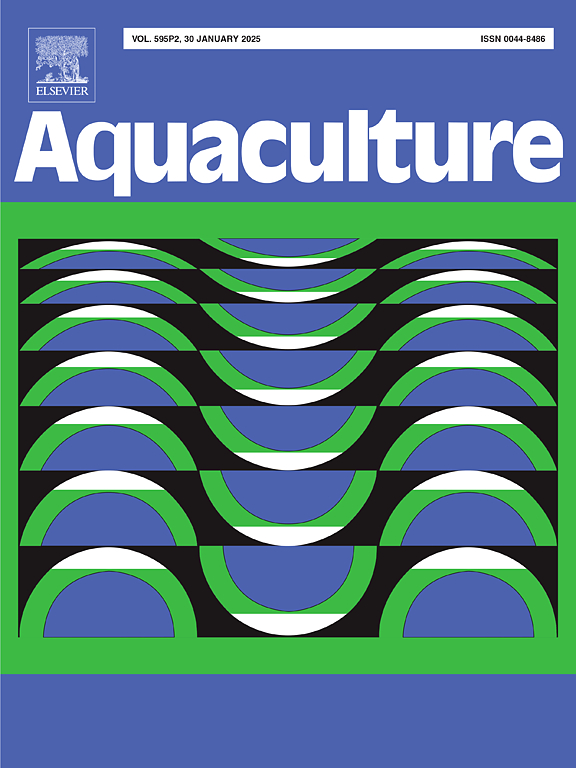Effects of acute and chronic exposure and elimination of nanoplastics and F-53B on inflammatory response and lipid metabolism in GIFT tilapia (Oreochromis niloticus)
IF 3.9
1区 农林科学
Q1 FISHERIES
引用次数: 0
Abstract
Micro-/nano-plastics (M/NPs) and perfluoroalkyl ether sulfonate (Cl-PFAES, F-53B) accumulated in the aquatic environment are easy to be ingested by fish, which may cause toxicity and obstacle the growth, deteriorating to aquaculture development and food safety. In this study, the economic fish GIFT tilapia (Oreochromis niloticus) was acutely (5 days) and chronically (21 days) exposed with 5-days elimination to polystyrene nanoplastics (PSNPs, 1 and 10 μg/L) single or combined with F-53B (200 ng/L) to examine impacts on oxidative stress, inflammatory response, lipid biochemical parameters, fatty acids, genes related to lipid metabolism, and intestinal microorganism. Results showed that the acute and chronic exposure to PSNPs and F-53B caused the oxidative stress and inflammatory responses of liver and intestine. Furthermore, the hepatic lipid metabolism was disordered, reflecting by the changes of lipid biochemical parameters, fatty acids profiles and the expression of genes related to lipid metabolism. The structure of intestinal microorganism was affected by the chronic exposure of PSNPs or combination of F-53B. After elimination, there were a partial of indicators recovery to the level of the control. The results highlighted the acute and chronic exposure to PSNPs and F-53B induced adverse effects on tilapia and can't recovery completely within a short period of time. This study helped to reveal the real ecological risks of NPs and F-53B on economic fish species, and appealed for attention to the ecological risk evaluation of persistent organic pollutants on economic fish species during the aquaculture period.

求助全文
约1分钟内获得全文
求助全文
来源期刊

Aquaculture
农林科学-海洋与淡水生物学
CiteScore
8.60
自引率
17.80%
发文量
1246
审稿时长
56 days
期刊介绍:
Aquaculture is an international journal for the exploration, improvement and management of all freshwater and marine food resources. It publishes novel and innovative research of world-wide interest on farming of aquatic organisms, which includes finfish, mollusks, crustaceans and aquatic plants for human consumption. Research on ornamentals is not a focus of the Journal. Aquaculture only publishes papers with a clear relevance to improving aquaculture practices or a potential application.
 求助内容:
求助内容: 应助结果提醒方式:
应助结果提醒方式:


